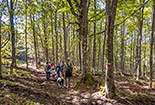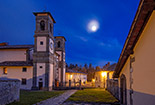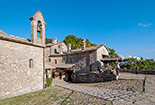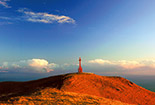NATIONAL PARK OF THE CASENTINO FORESTS
in Casentino, a Tuscan valley with which you can get familiar in every detail through this site
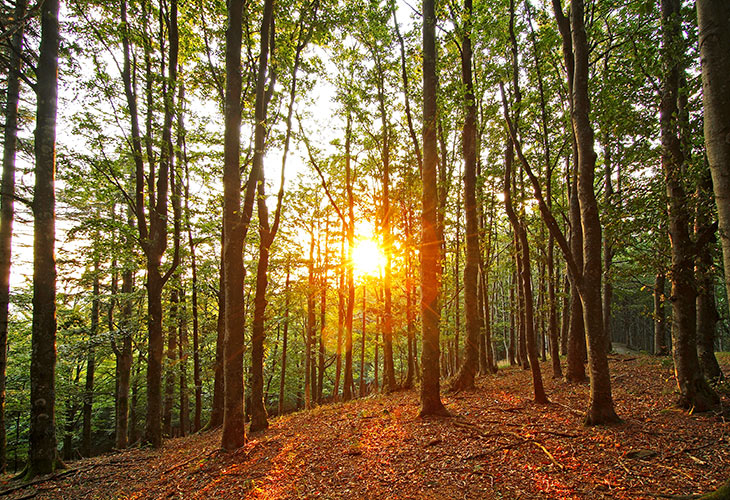
Texts and photos by Alessandro Ferrini ©
75 images with captions for a trip in the National Park from Monte Falterona to Verna. Click to start the visit
The National Park of the Casentino Forests, Mount Falterona and Campigna.
 Almost 37,000 hectares of superb nature with two important places of worship: Camaldoli and La Verna. Additionally, a lot of history, art and architecture in characteristic villages distinguish this great naturalistic area located in the Tuscan-Romagnolo Apennines.
All this, together with hundreds of kilometers of paths on any degree of difficulty, are a great presentation of this great green lung, and, at the same time, an invitation to visit it, or better, to live it.
In such way, in a few lines, one can define the National Park of the Casentino Forests, Mount Falterona and Campigna.
This National Park, instituted in 1933, occupied naturalistic excellences already well known and appreciated by the lovers of mountain and hiking. We are talking about the Camaldolese Forests cared for by the monks of San Romualdo for centuries, of the monumental and called sacred woods located around the on the Rock of the Verna, of the seemingly never-ending chestnut, fir and beech woods on Mount Falterona and in the Campigna Forest.
It is hard to suggest the best time to visit the park. Certainly, summer is the season with more visitors, also as a consequence of the desire of many to get away from the heat and the chaotic life of the city. Although, the park offers many surprises and the most beautiful and fascinating spectacles during the other seasons.
In spring, the paths are immersed in the light green of the newborn beech leaves and many other colors offered by the several types of leaves. This season is also characterized by very pleasant sounds such as the one crated by ditches and creeks full of water and the incessant chirping of many bird species.
Autumn offers warm colors, yellow, orange and red, which become very lively and almost blinding when enlightened by the direct sunlight, or very light when filtered by the first fogs. The most characteristic noise in the autumn forest – which attracts a specific kind of tourism – is the strong bellow of the male deer in rut, from dusk until the first lights of dawn.
Almost 37,000 hectares of superb nature with two important places of worship: Camaldoli and La Verna. Additionally, a lot of history, art and architecture in characteristic villages distinguish this great naturalistic area located in the Tuscan-Romagnolo Apennines.
All this, together with hundreds of kilometers of paths on any degree of difficulty, are a great presentation of this great green lung, and, at the same time, an invitation to visit it, or better, to live it.
In such way, in a few lines, one can define the National Park of the Casentino Forests, Mount Falterona and Campigna.
This National Park, instituted in 1933, occupied naturalistic excellences already well known and appreciated by the lovers of mountain and hiking. We are talking about the Camaldolese Forests cared for by the monks of San Romualdo for centuries, of the monumental and called sacred woods located around the on the Rock of the Verna, of the seemingly never-ending chestnut, fir and beech woods on Mount Falterona and in the Campigna Forest.
It is hard to suggest the best time to visit the park. Certainly, summer is the season with more visitors, also as a consequence of the desire of many to get away from the heat and the chaotic life of the city. Although, the park offers many surprises and the most beautiful and fascinating spectacles during the other seasons.
In spring, the paths are immersed in the light green of the newborn beech leaves and many other colors offered by the several types of leaves. This season is also characterized by very pleasant sounds such as the one crated by ditches and creeks full of water and the incessant chirping of many bird species.
Autumn offers warm colors, yellow, orange and red, which become very lively and almost blinding when enlightened by the direct sunlight, or very light when filtered by the first fogs. The most characteristic noise in the autumn forest – which attracts a specific kind of tourism – is the strong bellow of the male deer in rut, from dusk until the first lights of dawn. Winter, for the park forests, is the season of silence. It seems like an invitation to reflect, to find yourself.
You are not confused by many colors because everything turns into a sort of grey scale. Inside the several woods, perspectives change because the lack of leaves makes visibility better and deeper. With snow, everything becomes surreal, even more bichromatic. The contrast between light and dark becomes very strong. Snow, ice and frost offer unexpected spectacles, from light games with blinding reflections to incredibly beautiful sculptures modeled by the wind that will be hard to forget.
A quote from Marcel Proust says: “the real journey towards discovery does not consist in the search for new places, but in having new eyes”. With this assumption, the National Park will never stop showing itself. Even if we repeat the same path, we will see new things, new colors every time. Different emotions will also accompany us on the same journey. Our gaze can be attracted to things that are on the ground: flowers, rocks, roots, undergrowth shrubs. As well as from the aspects that are above us: majestic plants that rush towards the sky, their branches that intertwine with each other create real artistic forms. The variation of the light shapes everything around us in a different way. These situations are a real delight for lovers of nature photography, a hobby that has created a real tourism in the forest. The best and most patient photographers who know the secrets of the forest are also able to photograph the fauna: many types of birds, roe deer, fallow deer, deer, wild boar, the coveted wolf.
We mentioned Camaldoli and La Verna at the beginning. These two places of faith of international fame, with their spirituality, their history and their art are real jewels set among a wonderful nature. Then there are several other towns and small villages. These include Badia Prataglia, where you can visit the church of the ancient abbey; Serravalle, which originated from a medieval castle; Moggiona, the town of the "bigonai"; Campigna, on the Romagna side, which was the holiday resort and hunting reserve of the Grand Duke of Tuscany Pietro Leopoldo di Lorena. From this mountain center, continuing to descend towards Romagna, we can reach the Ridracoli Dam, a beautiful reservoir of pure water nestled between the mountains of the park.
Winter, for the park forests, is the season of silence. It seems like an invitation to reflect, to find yourself.
You are not confused by many colors because everything turns into a sort of grey scale. Inside the several woods, perspectives change because the lack of leaves makes visibility better and deeper. With snow, everything becomes surreal, even more bichromatic. The contrast between light and dark becomes very strong. Snow, ice and frost offer unexpected spectacles, from light games with blinding reflections to incredibly beautiful sculptures modeled by the wind that will be hard to forget.
A quote from Marcel Proust says: “the real journey towards discovery does not consist in the search for new places, but in having new eyes”. With this assumption, the National Park will never stop showing itself. Even if we repeat the same path, we will see new things, new colors every time. Different emotions will also accompany us on the same journey. Our gaze can be attracted to things that are on the ground: flowers, rocks, roots, undergrowth shrubs. As well as from the aspects that are above us: majestic plants that rush towards the sky, their branches that intertwine with each other create real artistic forms. The variation of the light shapes everything around us in a different way. These situations are a real delight for lovers of nature photography, a hobby that has created a real tourism in the forest. The best and most patient photographers who know the secrets of the forest are also able to photograph the fauna: many types of birds, roe deer, fallow deer, deer, wild boar, the coveted wolf.
We mentioned Camaldoli and La Verna at the beginning. These two places of faith of international fame, with their spirituality, their history and their art are real jewels set among a wonderful nature. Then there are several other towns and small villages. These include Badia Prataglia, where you can visit the church of the ancient abbey; Serravalle, which originated from a medieval castle; Moggiona, the town of the "bigonai"; Campigna, on the Romagna side, which was the holiday resort and hunting reserve of the Grand Duke of Tuscany Pietro Leopoldo di Lorena. From this mountain center, continuing to descend towards Romagna, we can reach the Ridracoli Dam, a beautiful reservoir of pure water nestled between the mountains of the park. It is possible to walk along paths that run along its perimeter and navigate it with an electric boat.
The Casentinesi Forests have a history closely linked to Camaldoli which begins in the 12th century. It was the monks of this order who began to treat them and make them productive by planting fir trees. Already in the fourteenth century these plants were stored in two ports along the Arno in Pratovecchio and Poppi during the summer. When in autumn the waters of the river began to swell, the fir trees began their river journey towards Florence. The long trunks were used for the beams of the cathedral and other churches. Other fir trees continued their journey to Pisa where they were used for the masts of ships in the shipyards of this seafaring city or reached other countries to be generally used for the same purpose.
The fir trees of the Casentinesi Forests have certainly participated in various events in European history. It cannot be excluded that they were also present at the victory of the English fleet over the Spanish Invincible Army.
The seventyfive images of this web section will accompany you on a journey through the National Park that will begin in its northernmost area, on Monte Falterona, and will end in the southernmost part, at the Sanctuary of La Verna.
It is possible to walk along paths that run along its perimeter and navigate it with an electric boat.
The Casentinesi Forests have a history closely linked to Camaldoli which begins in the 12th century. It was the monks of this order who began to treat them and make them productive by planting fir trees. Already in the fourteenth century these plants were stored in two ports along the Arno in Pratovecchio and Poppi during the summer. When in autumn the waters of the river began to swell, the fir trees began their river journey towards Florence. The long trunks were used for the beams of the cathedral and other churches. Other fir trees continued their journey to Pisa where they were used for the masts of ships in the shipyards of this seafaring city or reached other countries to be generally used for the same purpose.
The fir trees of the Casentinesi Forests have certainly participated in various events in European history. It cannot be excluded that they were also present at the victory of the English fleet over the Spanish Invincible Army.
The seventyfive images of this web section will accompany you on a journey through the National Park that will begin in its northernmost area, on Monte Falterona, and will end in the southernmost part, at the Sanctuary of La Verna.



